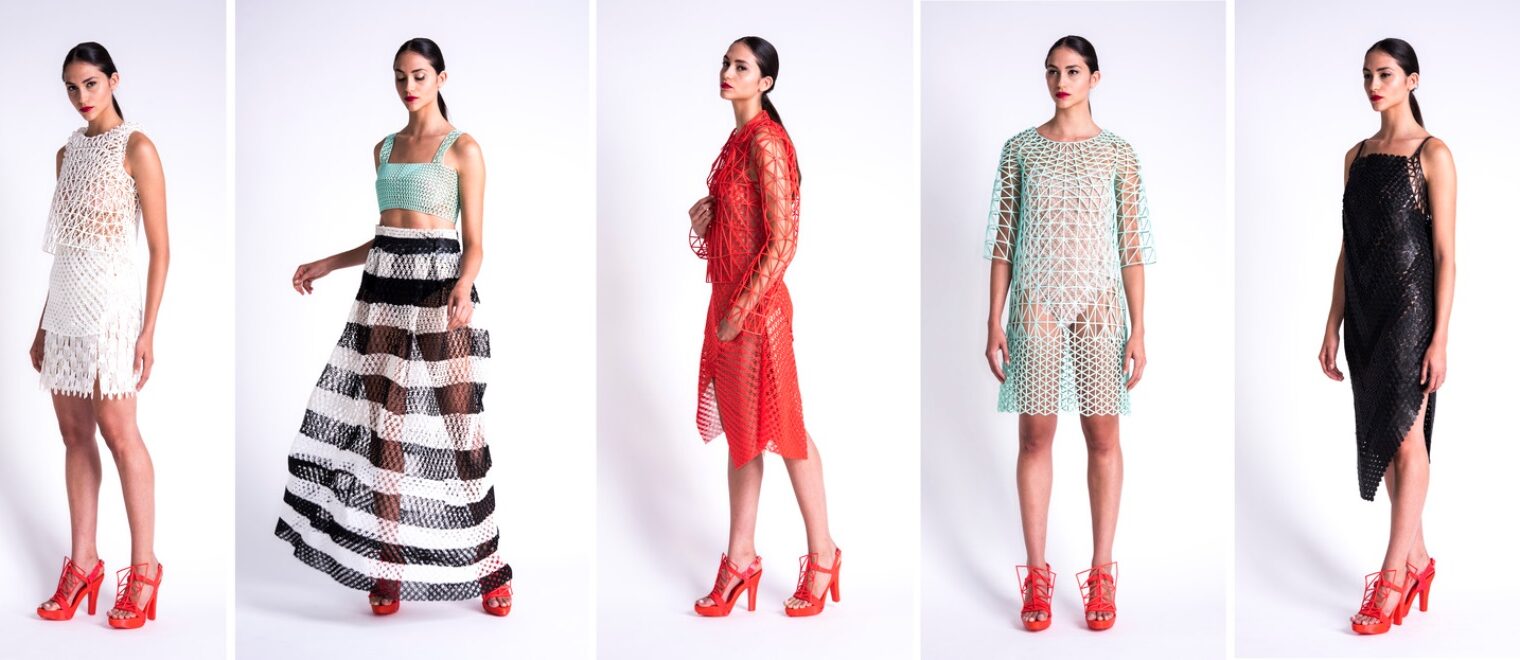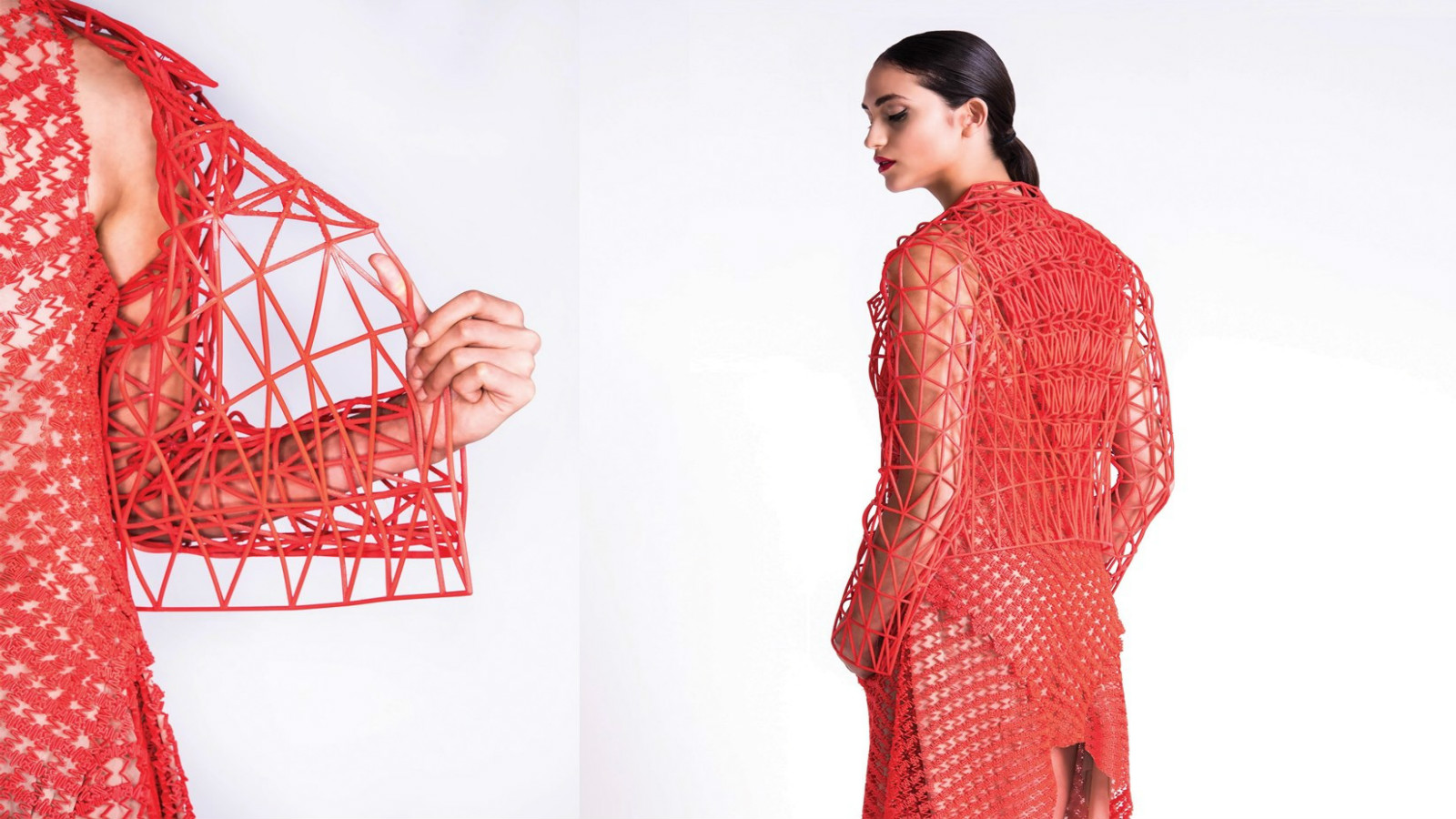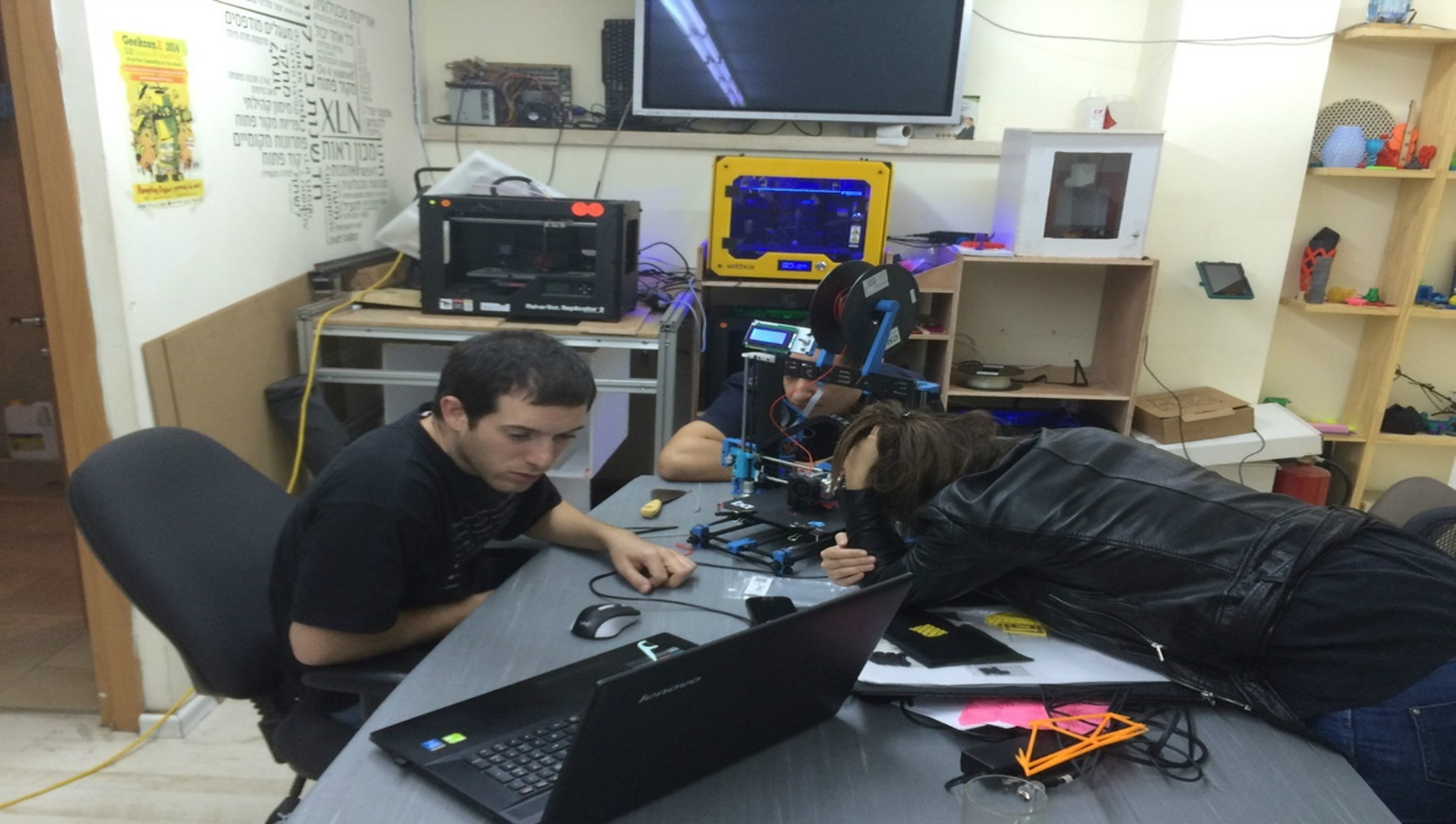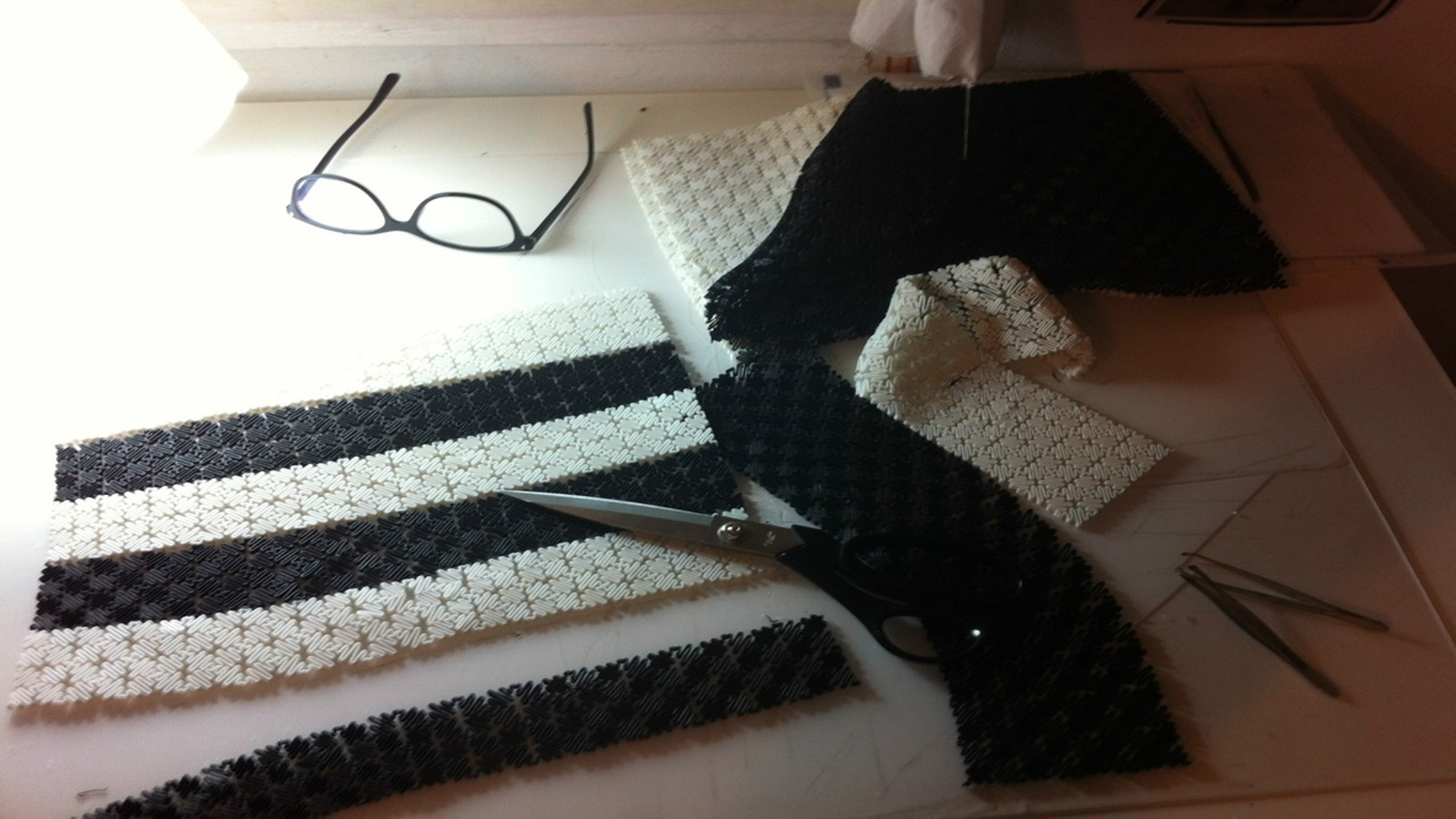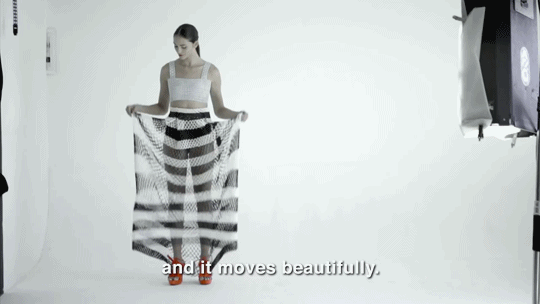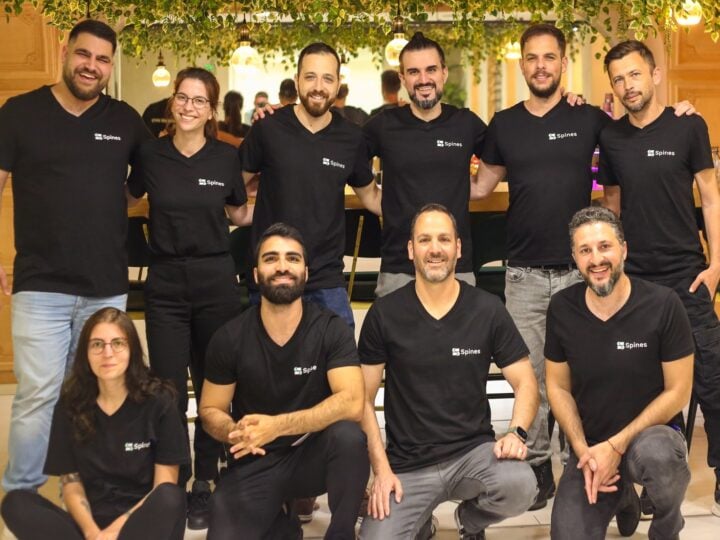Fashion-design major Danit Peleg always thought far out of the box. So her professors at Shenkar College of Engineering and Design in Ramat Gan weren’t surprised that for her senior project she wanted to create a 3D-printed collection of ready-to-wear clothing. But they thought she was biting off more than she could chew.
Peleg not only finished the collection on time for the big graduation show at the end of the 2014-15 school year, but also attracted worldwide attention thanks to a viral video about her groundbreaking home-printed fashion.
“All my teachers know I am very curious about making my own textiles,” she tells ISRAEL21c from her home in Tel Aviv. “I never went to Nachalat Binyamin and bought fabrics; I always did my own screen printing and embroidery. When I came up with this idea to search the 3D field, they were very worried because I knew nothing about this technology and it takes a long time even to make a sample.”
Indeed, her first item – a red jacket — would take about 300 hours to print.
Peleg, 27, first tried using a mixture of fabric and 3D printed elements, “but the hybrid stuff wasn’t exciting enough to me. I wanted to push the limits. I wanted to check if it’d be possible to create an entire garment using technology accessible to anyone.”
Israel’s XLN (Cross-Lab Network) 3D printing initiative, sponsored by the Reut Institute, came to her rescue.
Every day for a month, she learned all she could from the “very kind and supportive” staff at the neighborhood 3D printing lab. She designed the jacket using Blender software and used XLN’s six printers to test different materials.
Her experiments pointed her in the direction of two products made in Spain: FilaFlex, a strong flexible filament, and a home printer called Witbox. At XLN, she met Assaf Peretz from TechFactoryPlus in the Tel Aviv suburb of Givatayim — the only Witbox seller in Israel.
“The 3D printing community is amazing, always helping young designers, and Assaf was so supportive,” she recalls. “I went there and it was like a treasure. He has eight Witbox machines, so I realized I could really make it happen. Leah Peretz, the head of Shenkar’s fashion design department, is very into putting the department into innovation mode, and she gave me a lot of encouragement.”
“I wanted to push the limits. I wanted to check if it’d be possible to create an entire garment using technology accessible to anyone.”
She named the red jacket “Liberte” in homage to her favorite painting, Eugène Delacroix’s Liberty Leading the People, which was her inspiration to take liberties with fashion.
“I have the freedom to make what I want and not buy something someone else chose for me. This is a new revolution … and in 10 or 20 years we’ll see a lot more materials we can use in 3D printing — maybe polyester or some other fabric familiar to us – that give us the liberty to print our own clothing.”
Encouraged by her success with the Liberte jacket, Peleg then created lace-like textiles based on mesostructured cellular materials invented by Andreas Bastian. Every A4-sized sheet of her new textile took at least 20 hours to print on a “3D-printing farm” she set up at home.
The five ensembles in the Danit Peleg collection showcased on the Shenkar runway – not including the shoes worn by the models — represent more than 2,000 hours of printing, or 400 hours per outfit.
After a video about her project went viral through the “Start-Up Nation” channel, garnering more than 2 million views in a week, people from all over the world started contacting her. Peleg has been invited to present to students at New York’s Parsons School of Design and may take part in several exhibitions in Europe.
Peleg proved that 3D-printed fashion — what Israeli-born Massachusetts Institute of Technology media arts Prof. Neri Oxman calls “tech couture” — could become accessible to the masses.
“There’s been a lot more excitement around this project than I expected,” she says. “I think people in the fashion world are seeing it as a breakthrough. I didn’t sign anything yet, but every day I get interesting inquiries about collaborations. I am thinking of making a line of clothing that people can actually wash and wear, with a lining inside so it feels nice on the body.”
Peleg’s boyfriend, Internet entrepreneur Dan Peguine, helped her create a professional media kit due to the high demand for images and info. “I’m very proud to be from Israel and Shenkar, and to be inspiring others,” she says.
For more information, click here.




